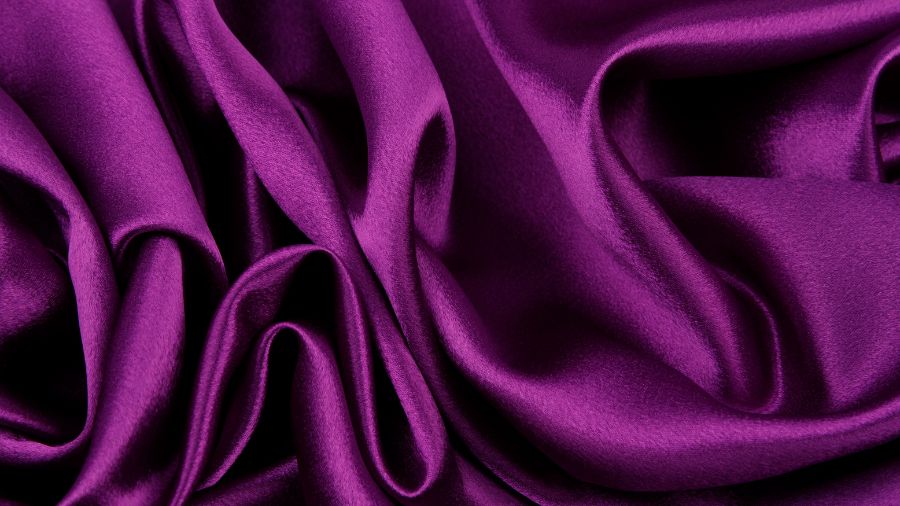Silk Fabric - The Timeless Elegance of Natural Luxury

Image: Collected
Silk, the epitome of sophistication, has been coveted for its lustrous charm and natural sheen. It's a fabric that whispers luxury with every touch. From haute couture runways to high-end home décor, silk's versatile charm caters to a variety of industries.
Silk's allure isn't just skin-deep. This natural wonder boasts benefits aplenty. Its breathable and hypoallergenic properties make it a top choice for clothing, promoting comfort and skin health. In addition, silk's temperature-regulating abilities ensure a good night's sleep, making silk beddings highly sought after.
The weight of silk fabric, often measured in momme (mm), plays a crucial role in its applications. Lighter silks like chiffon and organza are perfect for airy summer garments, while heavier variants such as charmeuse are ideal for luxurious evening wear. Finding the right balance between weight and drape is key.
Silk fabric's appeal goes beyond its luxurious touch; it's in the weaves. Twill, satin, and plain weaves are some popular choices. Each weave creates a distinct texture, influencing the fabric's appearance and functionality. Twill offers durability, satin gleams with a smooth finish, while plain weave provides simplicity.
Printed silk fabric opens up a realm of creativity. These fabrics feature intricate designs, patterns, and motifs, transforming silk into wearable art and statement home textiles. With the advancement of digital printing technology, the possibilities are endless.
In today's market, natural silk fabric remains a sought-after commodity. A growing emphasis on sustainable and eco-friendly textiles has led to an increased demand for silk produced through responsible practices. This trend aligns with the global shift towards environmentally conscious choices.
While silk's unique properties set it apart, it faces competition from alternative fabrics like satin blends and synthetic silk imitations. To maintain its market presence, silk must continually evolve and adapt to changing consumer preferences.
The silk industry transcends borders. Major silk-producing countries include China, India, and Brazil. The global silk market remains dynamic, influenced by factors such as government policies, economic conditions, and international trade agreements.
For businesses involved in silk sourcing, understanding the intricate supply chain is essential. It involves everything from cocoon harvesting to weaving and dyeing. Maintaining product quality and ethical practices throughout the supply chain is a constant challenge.
As we look to the future, the allure of silk fabric remains strong. Its timeless elegance and sustainable appeal continue to captivate consumers across industries. The future of silk lies in its ability to adapt, innovate, and meet the evolving demands of a conscientious market. The world of silk is a testament to the enduring elegance of nature's finest creation.
Silk's allure isn't just skin-deep. This natural wonder boasts benefits aplenty. Its breathable and hypoallergenic properties make it a top choice for clothing, promoting comfort and skin health. In addition, silk's temperature-regulating abilities ensure a good night's sleep, making silk beddings highly sought after.
The weight of silk fabric, often measured in momme (mm), plays a crucial role in its applications. Lighter silks like chiffon and organza are perfect for airy summer garments, while heavier variants such as charmeuse are ideal for luxurious evening wear. Finding the right balance between weight and drape is key.
Silk fabric's appeal goes beyond its luxurious touch; it's in the weaves. Twill, satin, and plain weaves are some popular choices. Each weave creates a distinct texture, influencing the fabric's appearance and functionality. Twill offers durability, satin gleams with a smooth finish, while plain weave provides simplicity.
Printed silk fabric opens up a realm of creativity. These fabrics feature intricate designs, patterns, and motifs, transforming silk into wearable art and statement home textiles. With the advancement of digital printing technology, the possibilities are endless.
In today's market, natural silk fabric remains a sought-after commodity. A growing emphasis on sustainable and eco-friendly textiles has led to an increased demand for silk produced through responsible practices. This trend aligns with the global shift towards environmentally conscious choices.
While silk's unique properties set it apart, it faces competition from alternative fabrics like satin blends and synthetic silk imitations. To maintain its market presence, silk must continually evolve and adapt to changing consumer preferences.
The silk industry transcends borders. Major silk-producing countries include China, India, and Brazil. The global silk market remains dynamic, influenced by factors such as government policies, economic conditions, and international trade agreements.
For businesses involved in silk sourcing, understanding the intricate supply chain is essential. It involves everything from cocoon harvesting to weaving and dyeing. Maintaining product quality and ethical practices throughout the supply chain is a constant challenge.
As we look to the future, the allure of silk fabric remains strong. Its timeless elegance and sustainable appeal continue to captivate consumers across industries. The future of silk lies in its ability to adapt, innovate, and meet the evolving demands of a conscientious market. The world of silk is a testament to the enduring elegance of nature's finest creation.
Previous Story
- Understanding the Properties and Applications of Spun Yarn...
- Z&Z Fabrics introduces Sorona fabric line
- Government urged to support local Adire fabric industry
- Performance fabrics: How do they really perform?
- Queen’s Award for Heathcoat Fabrics
- Proposte 2022 set to showcase new fabrics, curtains
- Best crochet yarn
- South Indian spinners cannot pass on rising cotton...